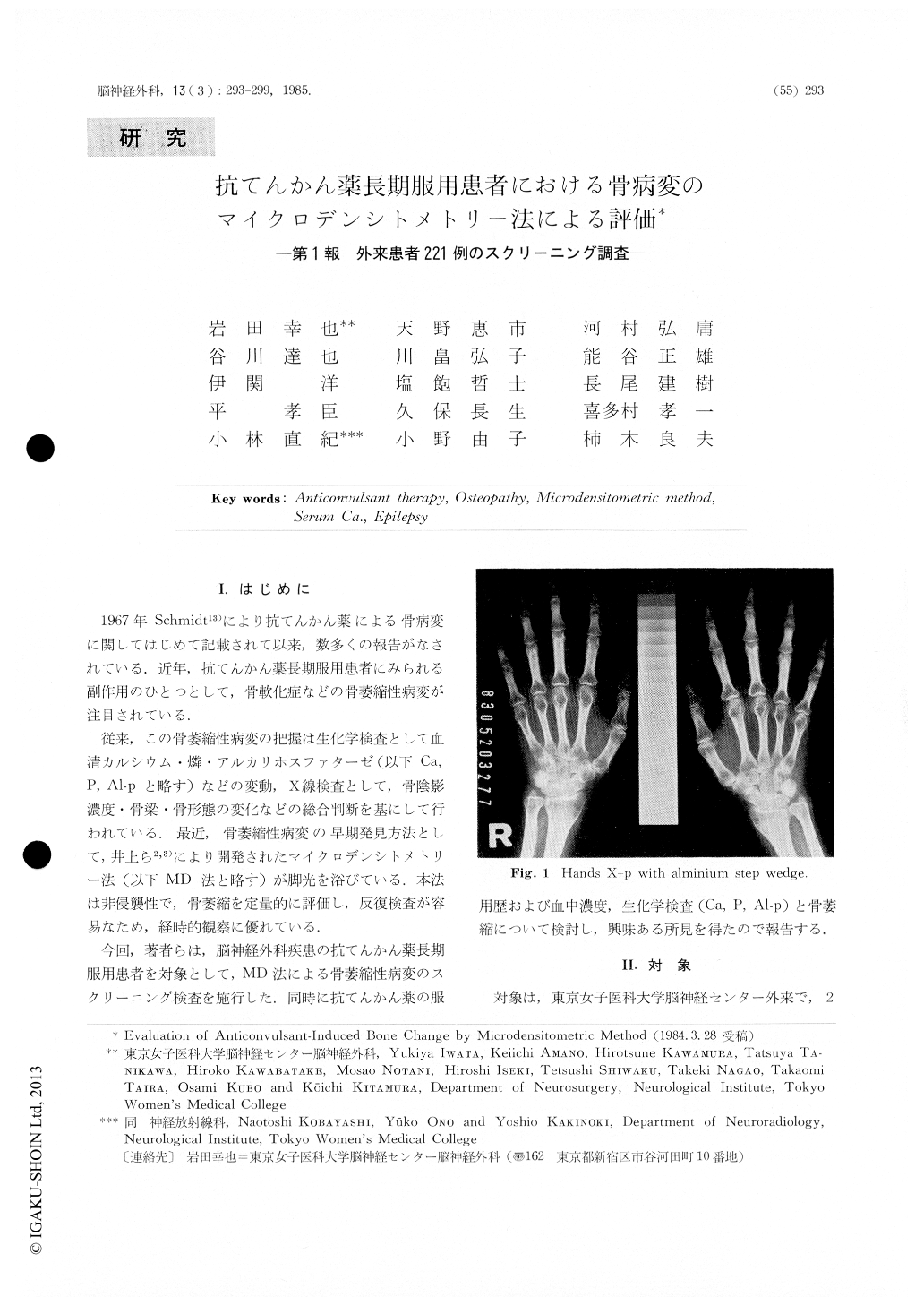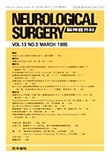Japanese
English
- 有料閲覧
- Abstract 文献概要
- 1ページ目 Look Inside
I.はじめに
1967年Schlnidt13)により抗てんかん薬による骨病変に関してはじめて記載されて以来,数多くの報告がなされている.近年,抗てんかん薬長期服用患者にみられる副作用のひとつとして,骨軟化症などの骨萎縮性病変が注目されている.
従来,この骨萎縮性病変の把握は生化学検査として血清カルシウム・燐・アルカリホスファターゼ(以下Ca,P,Al-pと略す)などの変動,X線検査として,骨陰影濃度・骨梁・骨形態の変化などの総合判断を基にして行われている.最近,骨萎縮性病変の早期発見方法として,井上ら2,3)により開発されたマイクロデンシトメトリー法(以下MD法と略す)が脚光を浴びている.本法は非侵襲性で,骨萎縮を定最的に評価し,反復検査が容易なため,経時的観察に優れている.
The effect of long-term anticonvulsants on bone change was evaluated by microdensitometric method (MD method) in 221 outpatients of NEUROLOGICAL INSTITUTE TOKYO WOMEN'S MEDICAL COLLEGE.
Laboratory findings including serum Ca, P, Al-p were compared with severity of bone change.
Following results were obtained; 1) In 221 patients, 159 cases (72%) were normal, 31 cases (14%) were in the initial stage of abnormality, 23 cases (10'',) in grade I, 7 cases (3%) in grade IIand one case (1%) in grade Ill of abnormality.
2) Incidence of abnormality was high in the age of 26-35 years old and in the age over 56 years old.

Copyright © 1985, Igaku-Shoin Ltd. All rights reserved.


